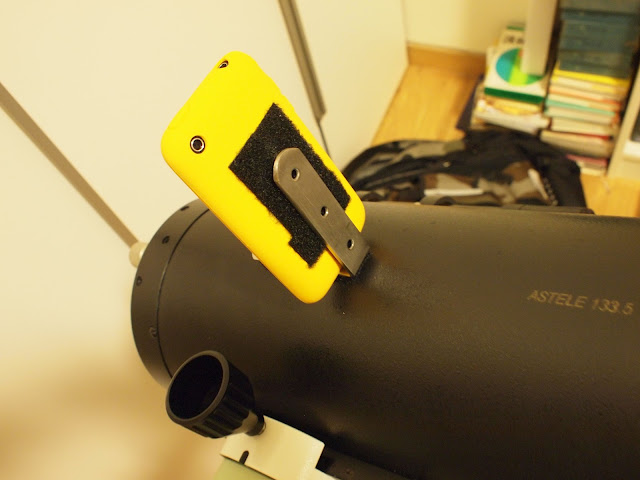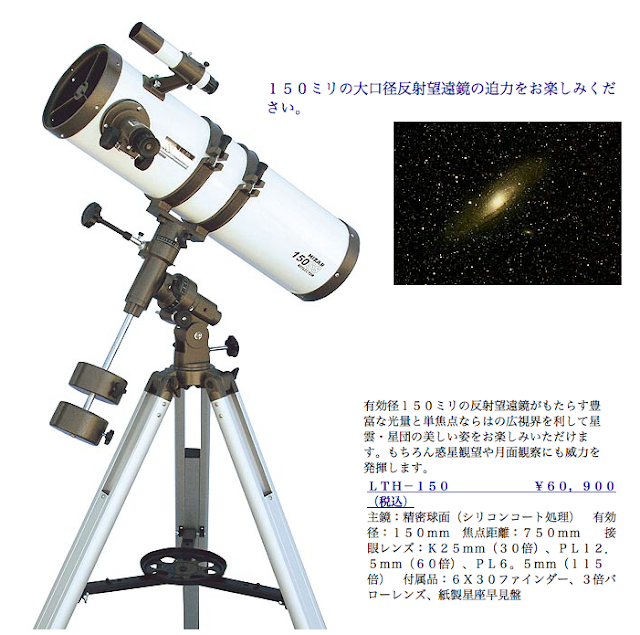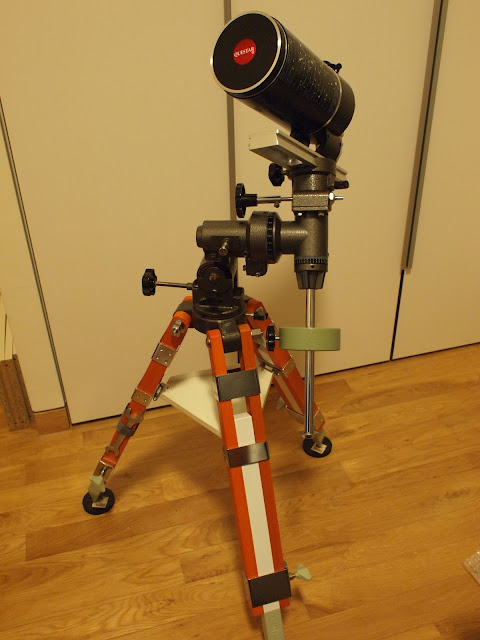I tried some rubber and metal washers, but didn't have any luck. I then made a shim from aluminium foil. This worked well when I screwed the shaft in by hand. I cleaned and greased everything and reassembled the mount, but there was no improvement! After some swearing and then a bit of investigation, I realised tightening the shaft hard torn the foil shim and spread it out.
After a bit of thinking, I realised the opposite of shimming was to remove material. So, the opposite opposite (i.e. same) effect could be achieved by filing down the base of the shaft opposite to where I had placed the shim, and also angling the sides perpendicular to this. I did this gradually, frequently checking the angle after some filing by screwing the shaft in tightly. I could see an improvement and eventually got it pretty straight. I filed off about 0.5mm.
I then cleaned and greased the RA shaft, greased the worm wheel and put it all back together. The RA shaft is now quite square to the Dec unit. Previously the RA circles were being pinched by the Dec unit due to the misalignment and could get stuck in place instead of moving with the RA shaft. This is now fully fixed, and the action of the RA setting circle is good - smooth and loose enough to move easily, but with enough stiction not to slip. So, now I have more accurate "push-to". The new grease improved rotation about the RA shaft itself, and is now very smooth.
The RA shaft has a simple but effective little "bearing". It is just 4 washers, with grease between each, behind the bolt holding the shaft in place. Re-greasing these led to smoother rotation and the ability to tune the shaft tension more finely.
Looking at the Orion site, the EQ-2 mount seems to be similar to this mount. Mizar had a smaller mount that the EQ-2 looks very, very similar to. My little mount is a bit more sturdy at the same weight. If you are having problems with an EQ-2 mount, it may be worth pulling it apart to check if the RA shaft is misaligned rather than bent. Obviously this is at your own risk.
Unfortunately I forgot to take photos of the disassembled mount and tear-down/rebuild process. It's very simple. The mount is nicely engineered apart from this misalignment.
I cleaned the whole mount with WD-40 and all the chromed parts with Brasso. It's looking pretty good:
On the near side of the RA unit, you can see, from left to right, a chrome bolt, a lever and a gear. This is clearer in a photo from the auction:
It seems likely that the chrome bolt is there to mount an optional RA motor drive, with the lever for some mechanism to (dis)engage the smaller gear(s) that would connect to the large gear.
You can also see the Dec knob points down towards the rear. So, when the mount is moved around RA, the Dec knob collides with the gear. Removing the lever and gear helps, but the Dec handle still collides with the RA worm shaft. Unlike other mounts, the Dec handle does not rotate with the Dec shaft, so this collision happens regardless of Dec.
Also, on the other side, again in a photo from the auction, you can see the RA knob:
Again, the RA worm shaft does not rotate with the RA shaft, but remains in place. This protudes quite a way, and the Dec worm shaft collides with it when rotating the RA shaft in the opposite direction.
Removing the chrome gear revealed that the inside of the worm shaft was threaded for an M4 bolt. This makes it possible to use a different knob to turn the shaft. The Dec worm shaft didn't look to be threaded, but after screwing a bolt in with some WD-40, it was clear that it too is threaded for M4.
I upgraded my Takahashi TOA130F with the MEF-4 micro focuser, and my Sky-90 with the MEF-3 micro focuser, so I had two spare Takahashi focusser knobs. I got some M4 nuts and bolts from a local hardware store and attached the Tak knobs:
Now there is complete clearance to rotate the mount fully in both RA and Dec. The only limiting factor is the telescope itself, but now I can track past meridian, and the mount is easier to use.
The other major modification I can think of would be to add a motor. To do this, I need to re-attach the gear and mount the motor on the rhs. Fortunately the RA and Dec worm assemblies are asymmetric. If I swapped them, I would be able to have the Tak knobs on the other side, allowing me to have a motor on the rhs.
The mount has fairly simple bushings, which could be improved by teflon bushings, but it's already very smooth.
I was able to use the mount for a short while last night to find some doubles in the haze between the clouds with a Pentax 75-SDHF. It is very rigid, with damping times less than 0.5 seconds, without the use of any damping pads. I'm not very practiced with old-fashioned setting circles, but I was able to find targets far (greater than 10 degrees) from nearby bright stars that were not visible to the naked eye. Scanning RA in the finder and at low powers, and using binoculars to get context also helps. Each goto is more effort and a bit slower than with an automatic mount but the set up time is minimal, so I can spend more precious time before the clouds come in.
So, this old, cheap little mount is now back in good condition and very usable.










